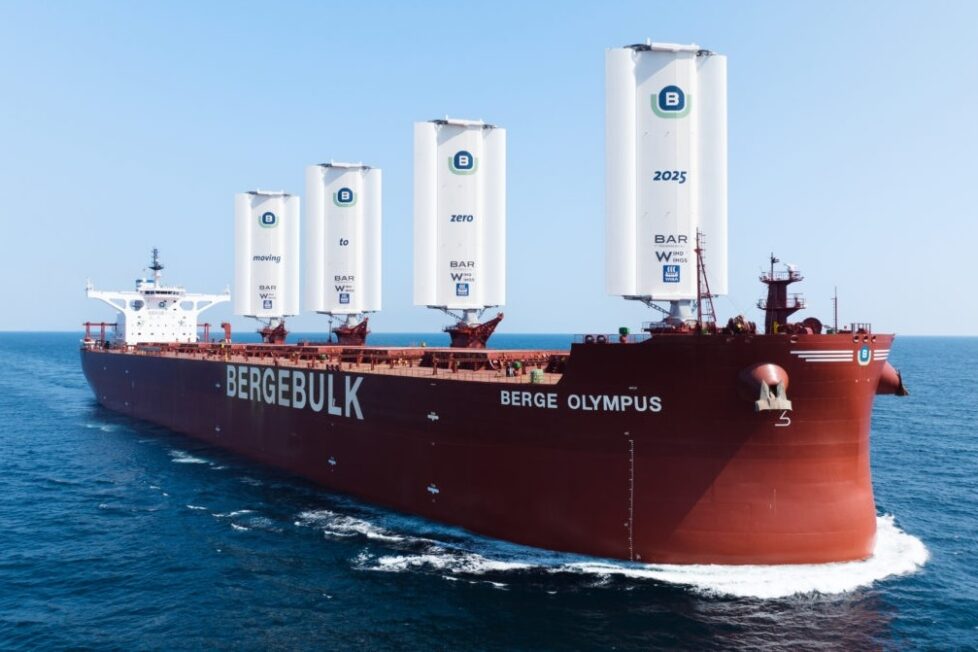Berge Bulk Launches Cargo Ship Using Wind-Assisted Propulsion to Cut Emissions

Dry bulk ship owner Berge Bulk announced the launch of its 210,000 Metric Tons Deadweight vessel, Berge Olympus, retrofitted with four BARTech WindWings by Yara Marine Technologies, that use wind power to reduce fuel consumption and CO2 emissions.
Yara’s WindWings, each possessing an aerodynamic span of 37.5 metres height and 20 metres width, provide an advanced wind-assisted propulsion and route optimization system.
Thomas Koniordos, Chief Executive Officer, Yara Marine Technologies said:
“Wind-assisted propulsion has the potential to offer immediate long-term solutions for shipping’s pathway to Net Zero. We are proud to work with trusted partners such as Berge Bulk and ensure that this technology can be scaled and manufactured to shipping’s high standards, ensuring a robust and resilient supply chain that can meet industry demand.”
According to the companies, the new installation will enable fuel savings of 6 tonnes per day, on an average worldwide route, as well as a CO2 emissions reduction of approximately 19.5 tonnes per day. The retrofit also establishes the Berge Olympus as the world’s most powerful sailing cargo ship.
Berge Bulk added that the installation forms part of its ambition to become carbon neutral by 2025, and that it will evaluate the installation of WindWings on more of its vessels that trade on routes with favorable wind conditions. Berge’s decarbonization plan includes a focus on improving fleet efficiency, leveraging maritime technology, piloting new fuels, and investing in carbon capture.
James Marshall, Chief Executive Officer, Berge Bulk said:
“At Berge Bulk, we are constantly striving to enhance our efficiency and reduce the environmentalEnvironmental criteria consider how a company performs as a steward of nature. More impact of our existing fleet. From 2008 until today, we have achieved a remarkable 46% reduction in our CO2 emissions per tonne mile, already surpassing the 2030 IMO target for reducing carbon emissions intensity. There’s still so much to do as we accelerate the transition to new fuel in the zero-carbon future.”